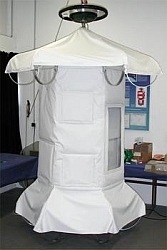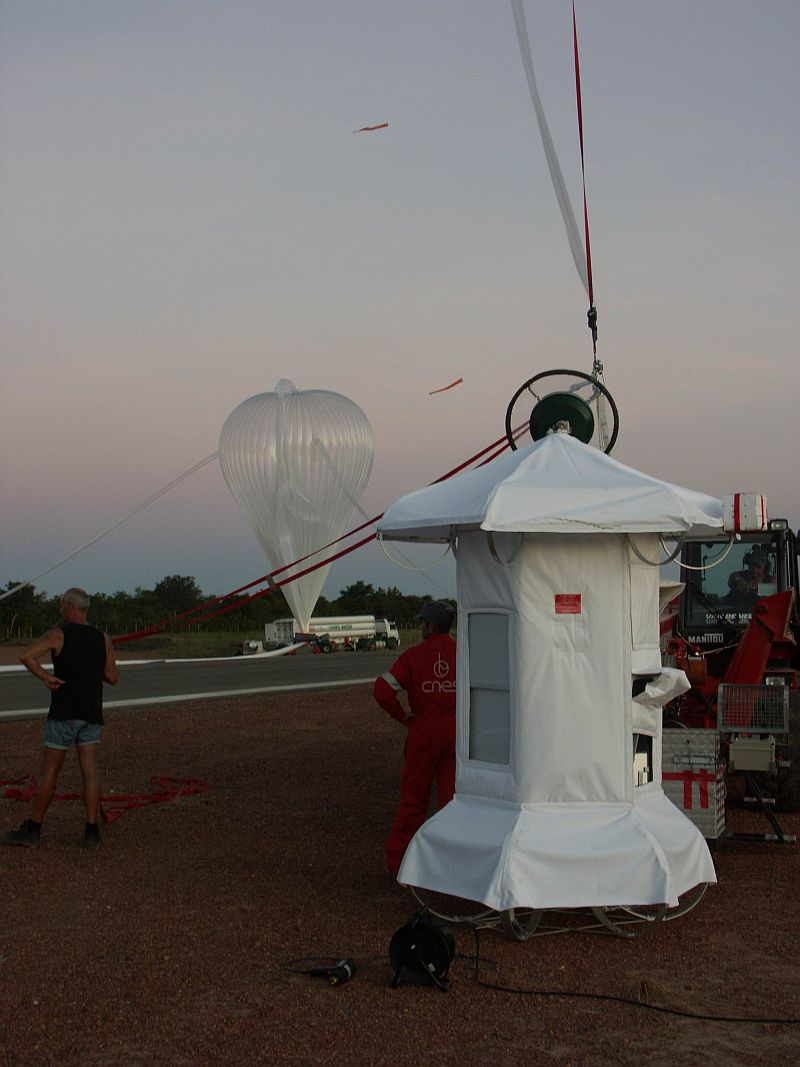Purpose of the flight and payload description
SALOMON-N2 (for Spectroscopie d'Absorption Lunaire pour l'Observation des Minoritaires Ozone et NOx - Nacelle 2) is a UV-visible balloon-borne spectrometer designed, like its predecesor SALOMON, to provide vertical profiles of O3, NO2, NO3, OClO and OBrO as well as the extinction coefficient of aerosols, at altitudes between 15 and 40 km. SALOMON-N2 conducts observations at night using the Moon as its light source and during the daytime using sun pointing.
The instrument weighs about 170 kg. It works in automatic mode during flight (including start-up, pointing, spectre acquisition and shut-down). The pointing system, the pivot and the gondola were developed at the Laboratoire de Physique et Chimie de l'Environnement (LPCE). Salomon-N2 uses an spectrometer similar to the one used in the SAOZ instrument and an aerosol counter called STAC.
In the future is planned to allow the integration of other instruments for the observation of further atmospheric compounds. In particular will be added a UV spectrometer dedicated to the observation of bromine monoxide BrO, an infra-red spectrometer for the measurement of methane CH4 and the DUSTER aerosol collector of Naples University.
SALOMON is involved in validation programmes for the ENVISAT satellite
Details of the balloon flight
Balloon launched on: 6/19/2008 at 18:05
Launch site: Domingos Rego Aerodrome, Timón, Maranhao, Brazil
Balloon launched by: Centre National d'Etudes Spatiales (CNES)
Balloon manufacturer/size/composition: Zero Pressure Balloon model 100z Zodiac - 100.000 m3
End of flight (L for landing time, W for last contact, otherwise termination time): 6/19/2008 at 22:10
Balloon flight duration (F: time at float only, otherwise total flight time in d:days / h:hours or m:minutes - ): ~ 4 h
Landing site: Near Timon, Maranhao, Brazil
Campaign: SCOUT 2008
Payload weight: 174 kgs
External references
- SCOUT-O3 large balloon experiment at European Ozone Research Coordinating Unit website
2981If you consider this website interesting or useful, you can help me to keep it up and running with a small donation to cover the operational costs. Just the equivalent of the price of a cup of coffee helps a lot.







